For the first time, fewer than half of Americans have an unwavering faith in God
Data from the General Social Survey plots the rise of a more secular nation
Back in 1993, two-thirds of American adults told pollsters from the General Social Survey they “know God really exists” and had “no doubts about it.” As recently as 2008 this certainty of belief in God topped 60 percent.
But during the 2010s faith in a higher power eroded at an unprecedented rate. By 2016 the share of confident believers had fallen to 57 percent. And by 2021 — the most recent year with available data — unwavering faith fell below 50 percent for the first time.
(Technically, it dropped to 49.7 percent. Given margins of error with survey data like this, you typically shouldn’t go out to decimal points, as that implies a level of precision that isn’t really warranted by the data. But “fewer than half” makes for a much more dramatic headline, so it’s what I’m going with today. I’ve got a family to feed, etc.)
It’s likely not a coincidence that a growing movement on the Right is seeking to remake America as a Christian nation at a time when staunch believers are becoming a minority.
Faith in a higher power is declining most rapidly among the young. Among 18 to 34-year-olds, the share with no doubt in the existence of God fell from 64 percent in 1993 to 38 percent in 2021. That current generation of doubt and disbelief will settle down and form families of their own, raising children who never set foot in a traditional church, virtually guaranteeing further erosion of belief in the coming decades.
Declining belief is also concentrated primarily on the left, and to a lesser extent among political independents. Unwavering faith among Democrats fell from a high of 69 percent (nice) in 2000 to 39 percent in 2021. Republican faith, on the other hand, hasn’t changed much — it stood at 74 percent in 1998, compared to 66 percent today.
Again: we’re talking about “confident” faith here. The GSS also has a category for “believe in God but has doubts,” and you might assume that this category would be growing larger as the share of doubt-free believers declines. But you’d be wrong, as the next chart shows:
The shares of people who say they “believe sometimes” or “believe with doubts” basically haven’t changed meaningfully since the late 1980s. But the share saying they believe in an unspecified “higher power,” rather than a capital-G “God,” has nearly doubled. Agnosticism — those who say they don’t know if God exists and there’s no way to find out — has almost tripled. And true, honest-to-goodness atheism has more than quadrupled since 1988, with 7 percent of the population saying flat-out that God doesn’t exist. Faith declines, while doubt and disbelief are on the rise.
Note, however, that the range of the y-axis on this chart is a lot smaller than the first one’s. A fully confident, unwavering belief in a personal God is still, by far, the most common belief in America today. It’s simply much less dominant than it used to be.
Here’s another striking fact: adults under 34 years of age are, for the first time, more likely to be an atheist, agnostic, or believer in an unspecified higher power than they are to have full confidence in the existence of God.
Consider this as well: the share of adults under age 34 who identify as Christian — a category which includes self-identified Catholics, Protestants, Orthodox Christians, inter- and non-denominational Christians, and “other” Christians — has fallen below 50 percent for the first time. (For the curious it’s a hard 49 percent — no need to go to decimal points to get below 50 this time). If the trend continues, the non-religious will outnumber Christians in this age group in a few years’ time.
Note that this chart has a longer time horizon, going back to the 1970s. And until the 1990s, religious belief was basically stable — Christians outnumbered non-believers by close to 10-to-1. But the early 90s were a sharp inflection point, setting faith and doubt on the trajectory they’re continuing to this day. I’m not sure what’s behind that, exactly. If you have any ideas, let me know in the comments.
Regardless, unless something big changes the United States is charting a course to a much more secular future, more in line with what you see in places like Europe. That context is useful for understanding the current enthusiasm for reactionary Christian nationalism on the Right. The white Christian population is declining, and that loss of majority status makes a certain type of conservative white person uneasy, and may even motivate some of them to take violent action with the hope of making America great again.
Thank you for subscribing to The Why Axis, the only newsletter that flat-out tells you when we’re bending the rules around decimal points.


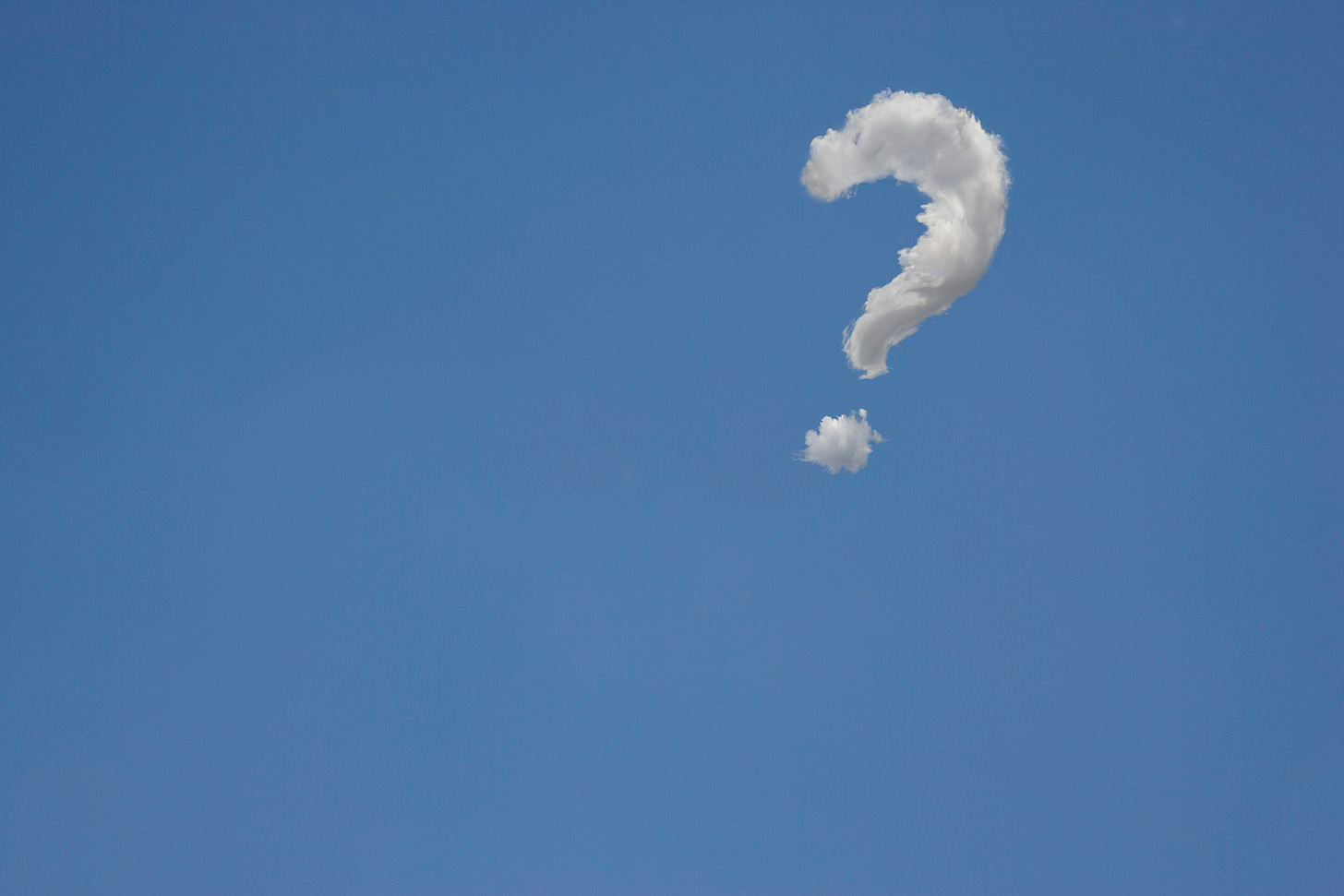
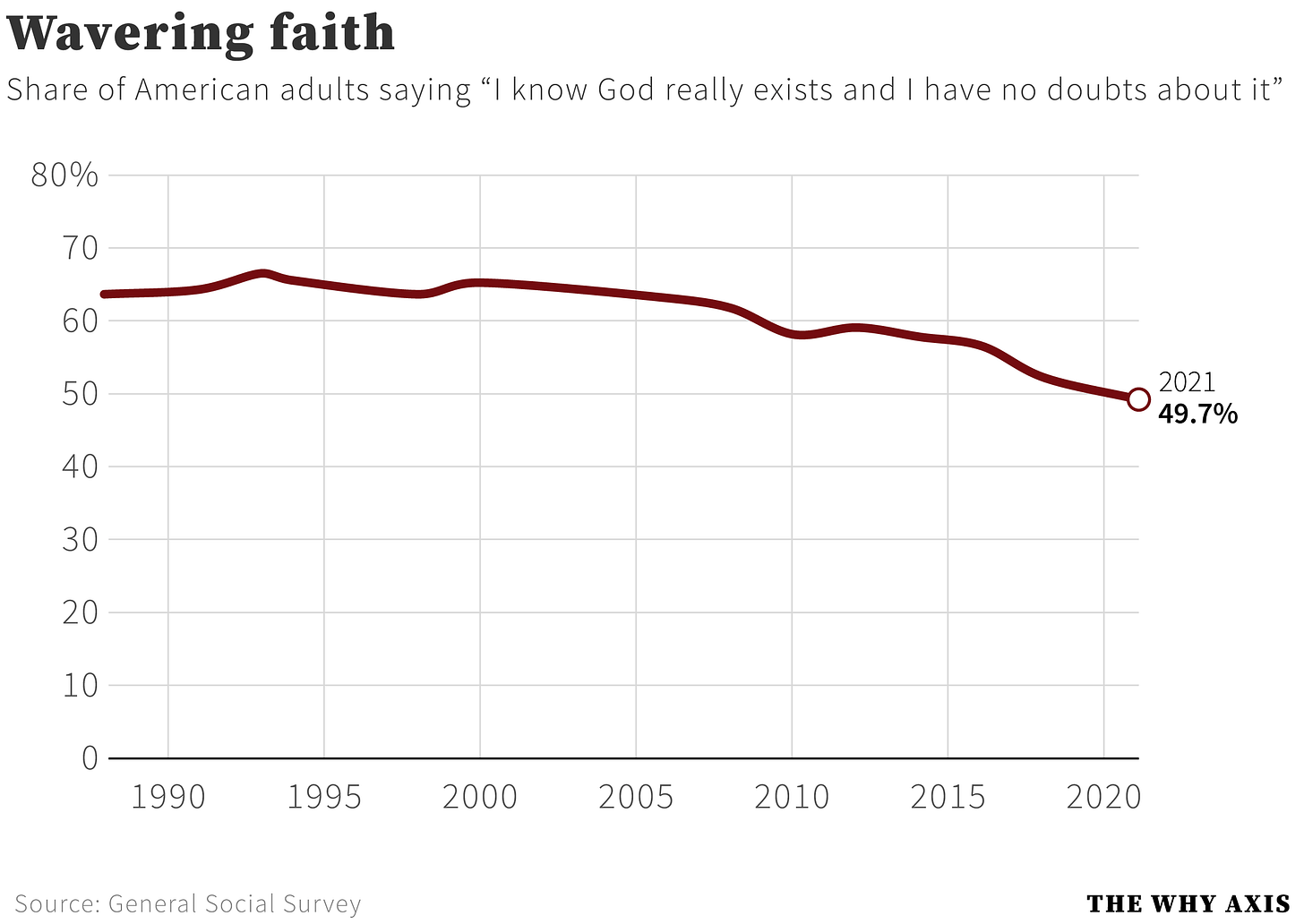
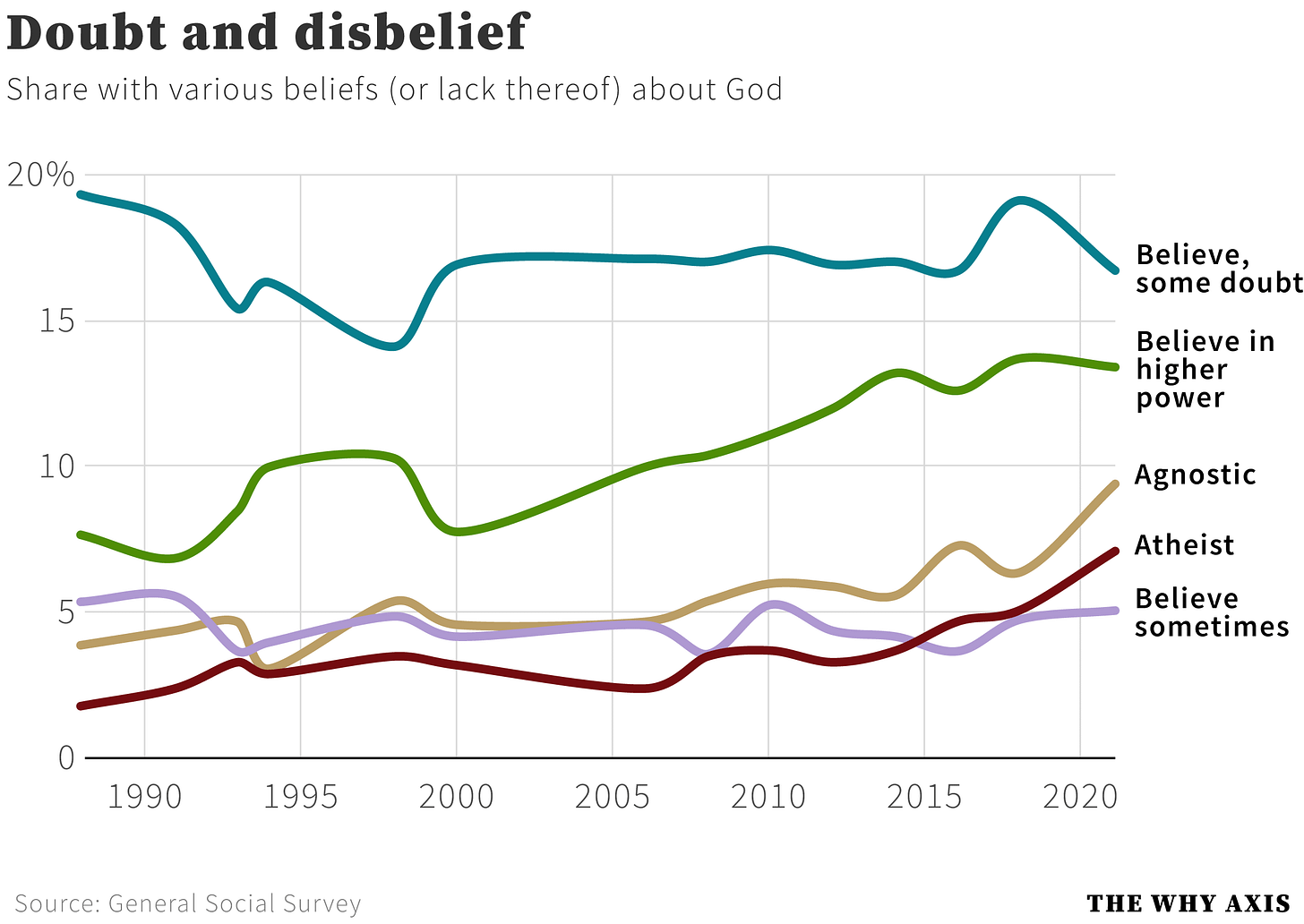
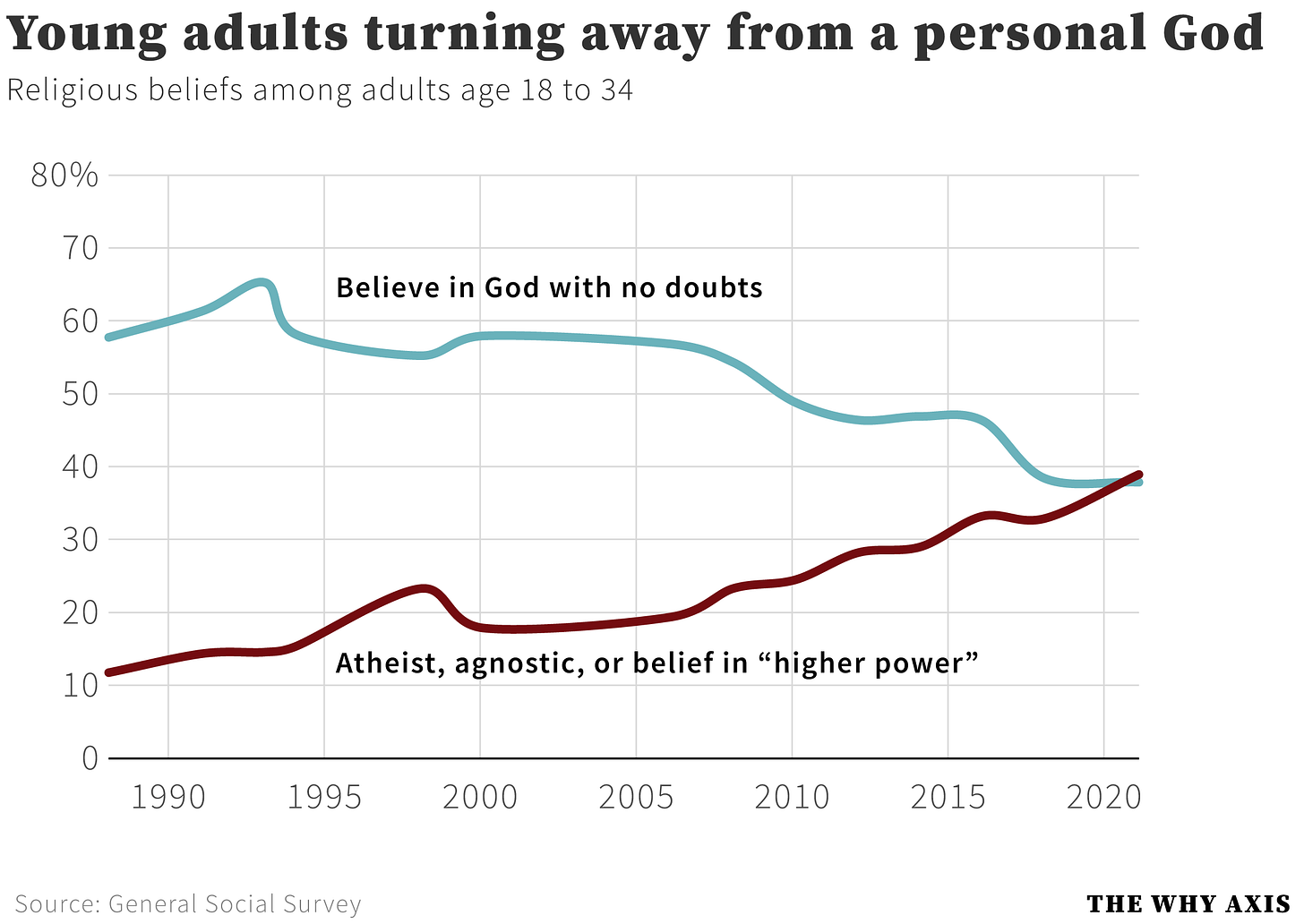
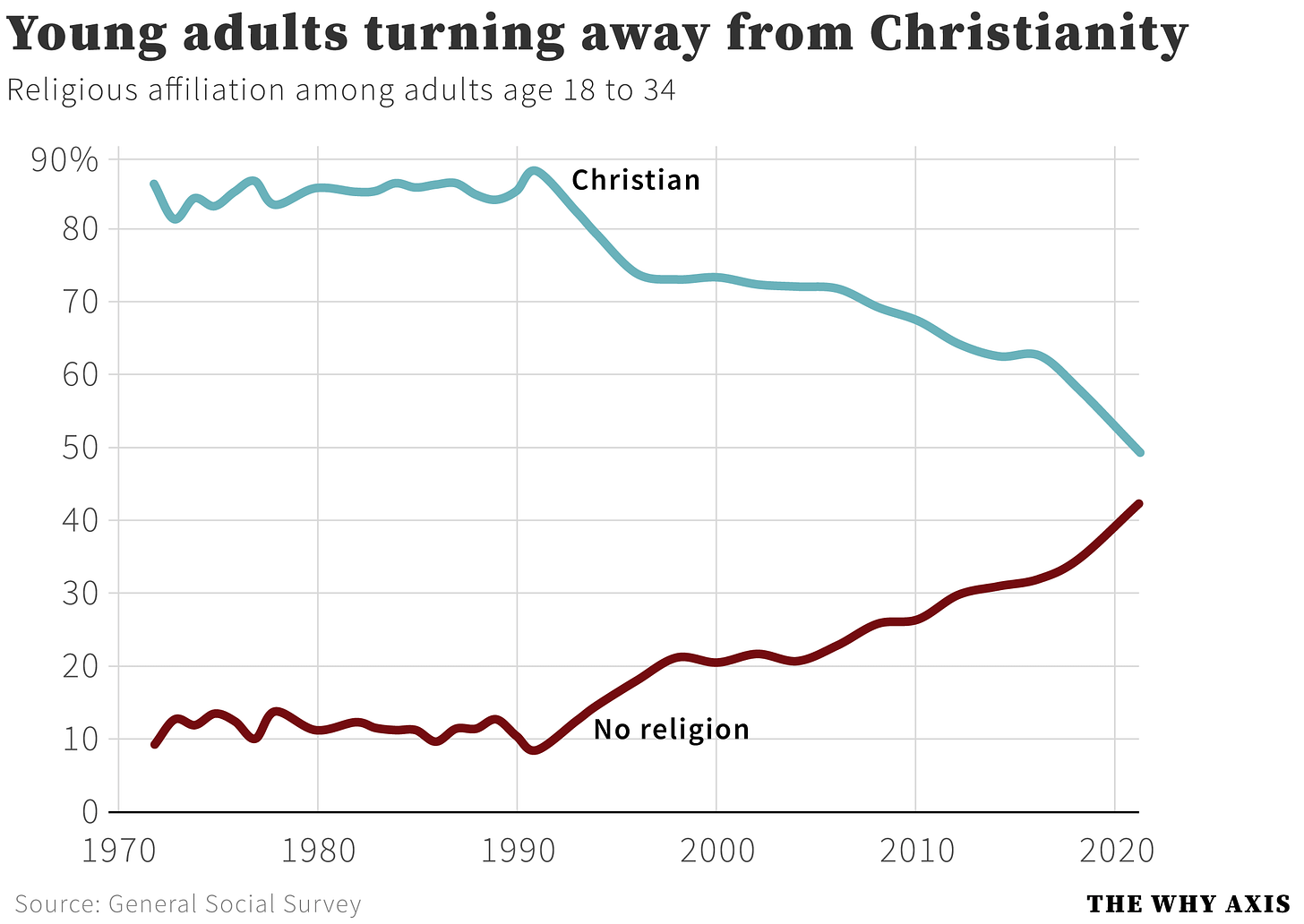
Easy to understand why young people are not Christian: they don't want to be foot soldiers in a homophobic, judgmental, narrow-minded, racist and sexist political movement that hates science. This is loser stuff. BTW, I'm a Christian. Just not a dupe or a dope.